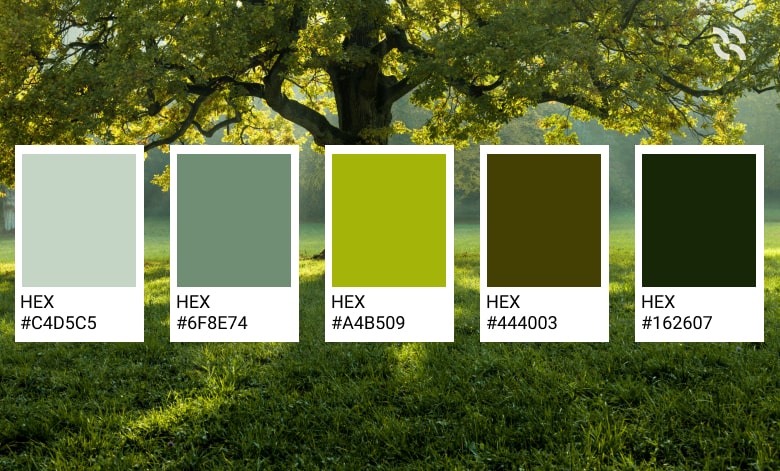The Power of Sustainable Design Choices for Forward-Thinking Brands
Sustainability in design has emerged and become prominent due to rapid progressive societal improvements. New-generation companies are redesigning their processes, seeking solutions that are more environmentally conscious. Today’s consumers want to interact with brands that are similar to them, and thus, businesses are provided with the perfect chance to incorporate sustainable design solutions, which, in addition to being friendly to nature, will appeal significantly to environmentally conscious customers.
Sustainability processes apply to graphic design and include aspects such as the choice of eco-friendly colors and materials and digital simplicity. At Spark Technology, we accept this transition and would like to assist top brands in incorporating sustainability into their products. In this article, let’s better understand why sustainability in design is evolving into an unalienable necessity and how we at Spark Technology can assist you in developing and communicating the brands of tomorrow.
Why Sustainable Design Matters
 Sustainable design is not only a trend anymore but needs to be considered by brands that consider themselves future-proof. Heavily consumers of the contemporary world are looking for brands that care about the environment. Even today’s studies show that over 70% of global buyers are ready to pay a higher price for green products and 88% of them believe they are happier with brands that very clearly demonstrate concern for the environment. Sustainable design is not an add-on or a topic of interest in design, it is a system that includes values, trust, and loyalty to the consumers through creating processes in the conscious market.
Sustainable design is not only a trend anymore but needs to be considered by brands that consider themselves future-proof. Heavily consumers of the contemporary world are looking for brands that care about the environment. Even today’s studies show that over 70% of global buyers are ready to pay a higher price for green products and 88% of them believe they are happier with brands that very clearly demonstrate concern for the environment. Sustainable design is not an add-on or a topic of interest in design, it is a system that includes values, trust, and loyalty to the consumers through creating processes in the conscious market.
Building Lasting Customer Loyalty
By using sustainable design, companies influence the consumer that is concerned with the environment. Such customers are not only the one-time buyers, these are the people who trust and continue to support the brands that care for similar issues.
Increasing Brand Equity and Positive Perception
In particular, it is established that sustainable brands are thought to be more truthful, innovative, and better in many aspects. As sustainable business practices remain dominant, they act as useful assets that set apart companies from their rivals.
Creating Long-Term Financial Efficiency
These sustainable options for the material and processes may in fact be more expensive at first but they turn out to be more cost effective in the long run. Sustainability has been embracing energy improvement, resource recycling, and managing waste; this makes it easy and cost-effective for businesses to save money while still saving the environment.
Key Elements of Sustainable Design
So, how do sustainable choices shape the design of products, spaces, and experiences? Here are some core elements that make a powerful impact on both the environment and brand perception:
Eco-Friendly Color Palettes
In this case, color is one of the essential brand elements, and environmentally friendly shades can be effective. Subtle colors, which are typical of depicting nature, such as earthen, botanical, and marine can serve as evidence of a brand’s environmental responsibility. This includes brands that adopt utilizing environment-friendly, reduced toxicity inks and dyes Which also help support producing clean products, especially regarding printed or packaging products.

Low-impact and Recycled Materials
It will readily be noted that materials can indeed be among the most significant aspects when it comes to developing any physical product or designing any environment saturated with branding elements. Where the material used can be biodegraded, recycled or taken from used products, it reduces the effect the brand has on the environment. Actually, traditional materials are environmental-friendly ones, and so are bamboo, cork or recycled metals and it also proves that a brand is recycling and striving to have minimal adverse effect on the environment.
Digital Minimalism
In the case where brands have an online presence, sustainable design considers their online platforms as well. Now referred to as digital minimalism, the approach is a technique that was developed to create simple online presences that do not consume a great deal of resources and are not cluttered. This ranges from fast site speed, efficient web hosting, and simple design that does not put much load on a device or a platform. Not only does this help to lessen the adverse effects of the brand on the environment but it even improves usability and interaction by enabling the users to navigate quickly and easily through videos, text, and other features.
Packaging Design that Minimizes Waste
Every step of the process of delivering goods involves packaging and this is often the most wasteful, it doesn’t need to be. Sustainable packaging design involves less packaging, minimizing the use of plastics, and applying the use of recycled or bio-degradable materials. it also extends to functional, minimalist, and easily recyclable packaging themselves.
Localized Production and Sourcing
Reducing emissions through the use of local suppliers and manufacturers may easily be achieved through this approach. Not only do they help the environment, but consumers are often aware that they are contributing to the economy of their country, province, or city, which makes a brand that values the environment and supports local markets, even more appealing.
The Impact of Sustainable Design Choices on Brand Appeal
Sustainability isn’t simply a moral imperative – it is the key to customer loyalty. Today’s consumer is much more than simply looking for the best product at the lowest price: by integrating environmentally friendly policies, brands send out a clear message in a world that is increasingly shaped by values.
Appealing to Eco-Conscious Consumer
Consumers of today do not only want products, but they want to trust the brands they are buying from In this regard, sustainable design solutions are helpful to a brand aiming to connect with customers willing to embrace responsibility.
Establishing a Competitive Edge
Today, the focus of many customers is placed on sustainable production; therefore, brands with clear environmental policies can easily be distinguished among competitors. Sustainability in this case is a competitive advantage because it extends the brand and makes it stand out in a competitive market.
Boosting Positive Brand Sentiment and Word-of-Mouth Marketing
Consumers engaged with sustainable brands typically exhibit favorable attitudes and communicate about the brand positively. Thus, when the consumer supports the mission of a brand, then he or she is willing to advocate for the brand and recommend friends, families, and friends in their social networks.
Conclusion
With the change in the global values towards a sustainable society, sustainability plays a strategic role not only in design and development but especially in brand and customer engagement. Ensuring that green decisions concerning colorway, material, or sustainability in digitization not only answers consumer expectations but also forms a foundation of sustainable responsibility and corporate accountability.
As Spark Technology, it is our mission to help the brands navigate the path toward sustainable change. What makes our partnership particularly special is that you’re not only making your brand visually look better, but you’re also helping to build a better future. Using knowledge and experience in sustainable sourcing, digital eco-efficiency, and brand transparency storytelling, we allow your brand to grow in this values-led marketplace.
Ready to lead with purpose? Contact Spark Technology today to start creating a brand that not only stands out but stands for something important. Together let’s shape tomorrow today: solutions with meaning, creativity, and relevance for the next generations.
If you are looking for high-quality web or app development services feel free to drop us a message

